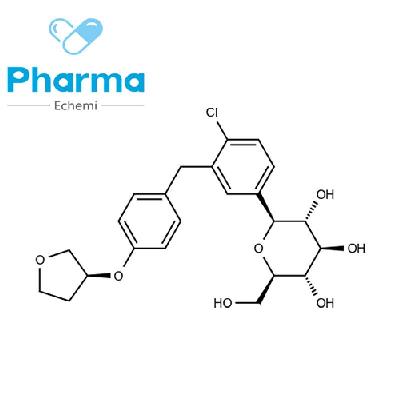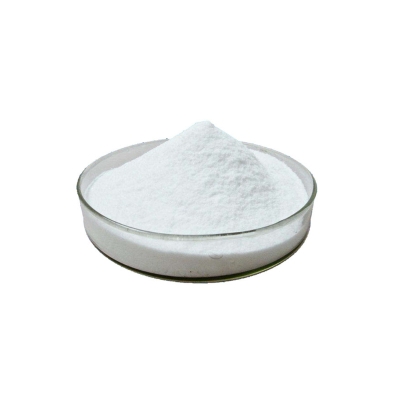-
Categories
-
Pharmaceutical Intermediates
-
Active Pharmaceutical Ingredients
-
Food Additives
- Industrial Coatings
- Agrochemicals
- Dyes and Pigments
- Surfactant
- Flavors and Fragrances
- Chemical Reagents
- Catalyst and Auxiliary
- Natural Products
- Inorganic Chemistry
-
Organic Chemistry
-
Biochemical Engineering
- Analytical Chemistry
-
Cosmetic Ingredient
- Water Treatment Chemical
-
Pharmaceutical Intermediates
Promotion
ECHEMI Mall
Wholesale
Weekly Price
Exhibition
News
-
Trade Service
Author: Medical team doctors report NMT NMT ENDO compile reports, please do not reprint without authorization.
Introduction: On March 21st, US time, the 2021 American Endocrine Society Annual Meeting (ENDO) will continue to be held.
At this ENDO conference, Dr.
Pawarid Techathaveewat from the University of Arizona in Phoenix, Arizona, USA, reported a “rare case of functional thyroid tissue regeneration after subtotal thyroidectomy”.
It is generally believed that the adult thyroid non-renewable thyroid is the earliest structure of the pharynx in the embryonic period, and the adult thyroid is considered a dormant organ or non-renewable.
In this context, total or subtotal thyroidectomy has become a treatment method for compressive non-malignant goiter.
Although it is theoretically possible to regenerate under the stimulation of pituitary thyroid-stimulating hormone (TSH), it is very rare.
Therefore, inhibitory TSH therapy is currently only applicable to malignant tumors of the thyroid.
Case report-Rare regeneration of the thyroid after subtotal resection Dr.
Pawarid Techathaveewat reported a rare case.
The patient was a 58-year-old male who underwent subtotal thyroidectomy for benign multinodular goiter.
In the following years, he The normal thyroid tissue regenerates rapidly, and it expands from a single side fragment to two lobes.
In 2006, the patient underwent subtotal thyroidectomy due to persistent compressive symptoms, and postoperative complications of iatrogenic hypoparathyroidism, requiring supplementation of calcium and calcitriol.
During the follow-up operation, bedside ultrasound examination revealed tiny residual tissue in the right thyroid fossa, and the pathology was benign.
Since then, in order to maintain normal thyroid function, patients need to receive complete replacement therapy with levothyroxine.
During 2011, the patient complained of a new globular sensation, dysphagia, and voice changes, which were initially thought to be caused by gastrointestinal problems.
An ultrasound of the neck accidentally revealed a 5.
7 cm normal thyroid lobe on the right side, without any tissue on the left side, and no nodules were found.
In order to ensure that the mass is of thyroid origin, fine needle aspiration was performed immediately, and the pathological result was benign.
Figure 1 The results of thyroid ultrasound in 2011: A) The right cross section accidentally showed 5.
7 cm of thyroid tissue on the right; B) The left thyroid bed cross section, the thyroid tissue was not obvious due to the appearance of new tissue, it was discussed whether to perform exploratory surgery.
However, considering the high risk of postoperative complications, it was decided to perform thyroid ultrasound monitoring every year.
Interestingly, the patient's levothyroxine demand also showed a downward trend, and the dose was less than half of the initial dose.
In 2013, ultrasound found a significant increase in the left thyroid gland (1.
7cm).
After six months, the normal thyroid gland on the right increased from 5.
7 cm to 6.
1 cm, and the left thyroid gland increased from 1.
7 cm to 2.
1 cm.
The patient denied that the compression symptoms had worsened, so he decided to continue cervical ultrasound monitoring.
In addition, he took only 25 micrograms of levothyroxine a day in early 2013 and stopped taking the drug later in the same year.
In 2020, the size of the right thyroid lobe increased to 6.
4cm, and the left lobe was 2.
4cm, and multiple nodules began to appear in each.
We performed FNA examination on several of these nodules, and the pathological results were all benign.
It is planned to conduct close monitoring again in 2021.
Figure 2 Ultrasound results in 2020: A) The right cross section shows the enlargement of the right thyroid tissue; B) The left cross section shows the growth of the left thyroid tissue.
Case Discussion When a patient undergoes thyroidectomy for benign multinodular goiter, thyroid function is usually the only routine examination program that will be performed during follow-up, and imaging examinations are generally not performed.
Although surgery is considered a radical treatment option, there is still the possibility of gland regeneration and even disease recurrence, which has been confirmed in our case.
Physiologically, it is a known phenomenon that TSH stimulates the growth of remaining thyroid tissue, but the mechanism of diffusion and regeneration in this case is still unknown.
One possible mechanism is RAS mutation, which is usually present in thyroid malignant tumors.
It may also be present in benign tissues, such as follicular adenomas, resulting in greater growth potential.
At present, for benign goiters after thyroidectomy, adjuvant suppressive TSH therapy or radioactive iodine ablation therapy is still uncommon and controversial, and more research is needed in the future.
Although functional thyroid tissue regeneration is extremely rare, when the thyroid replacement dose changes significantly or new oropharyngeal symptoms appear, special attention should be paid to clinical doubts.
Doctors must be aware of this happening, because new thyroid nodules may also develop in new thyroid tissue, so fine needle aspiration should be performed.
Clinical Implications Dr.
Pawarid Techathaveewat finally mentioned that functional thyroid tissue regeneration is extremely rare, but this case reminds us that when there is a significant change in the thyroid replacement dose or any new oropharyngeal symptoms appear, neck ultrasound may be considered.
Introduction: On March 21st, US time, the 2021 American Endocrine Society Annual Meeting (ENDO) will continue to be held.
At this ENDO conference, Dr.
Pawarid Techathaveewat from the University of Arizona in Phoenix, Arizona, USA, reported a “rare case of functional thyroid tissue regeneration after subtotal thyroidectomy”.
It is generally believed that the adult thyroid non-renewable thyroid is the earliest structure of the pharynx in the embryonic period, and the adult thyroid is considered a dormant organ or non-renewable.
In this context, total or subtotal thyroidectomy has become a treatment method for compressive non-malignant goiter.
Although it is theoretically possible to regenerate under the stimulation of pituitary thyroid-stimulating hormone (TSH), it is very rare.
Therefore, inhibitory TSH therapy is currently only applicable to malignant tumors of the thyroid.
Case report-Rare regeneration of the thyroid after subtotal resection Dr.
Pawarid Techathaveewat reported a rare case.
The patient was a 58-year-old male who underwent subtotal thyroidectomy for benign multinodular goiter.
In the following years, he The normal thyroid tissue regenerates rapidly, and it expands from a single side fragment to two lobes.
In 2006, the patient underwent subtotal thyroidectomy due to persistent compressive symptoms, and postoperative complications of iatrogenic hypoparathyroidism, requiring supplementation of calcium and calcitriol.
During the follow-up operation, bedside ultrasound examination revealed tiny residual tissue in the right thyroid fossa, and the pathology was benign.
Since then, in order to maintain normal thyroid function, patients need to receive complete replacement therapy with levothyroxine.
During 2011, the patient complained of a new globular sensation, dysphagia, and voice changes, which were initially thought to be caused by gastrointestinal problems.
An ultrasound of the neck accidentally revealed a 5.
7 cm normal thyroid lobe on the right side, without any tissue on the left side, and no nodules were found.
In order to ensure that the mass is of thyroid origin, fine needle aspiration was performed immediately, and the pathological result was benign.
Figure 1 The results of thyroid ultrasound in 2011: A) The right cross section accidentally showed 5.
7 cm of thyroid tissue on the right; B) The left thyroid bed cross section, the thyroid tissue was not obvious due to the appearance of new tissue, it was discussed whether to perform exploratory surgery.
However, considering the high risk of postoperative complications, it was decided to perform thyroid ultrasound monitoring every year.
Interestingly, the patient's levothyroxine demand also showed a downward trend, and the dose was less than half of the initial dose.
In 2013, ultrasound found a significant increase in the left thyroid gland (1.
7cm).
After six months, the normal thyroid gland on the right increased from 5.
7 cm to 6.
1 cm, and the left thyroid gland increased from 1.
7 cm to 2.
1 cm.
The patient denied that the compression symptoms had worsened, so he decided to continue cervical ultrasound monitoring.
In addition, he took only 25 micrograms of levothyroxine a day in early 2013 and stopped taking the drug later in the same year.
In 2020, the size of the right thyroid lobe increased to 6.
4cm, and the left lobe was 2.
4cm, and multiple nodules began to appear in each.
We performed FNA examination on several of these nodules, and the pathological results were all benign.
It is planned to conduct close monitoring again in 2021.
Figure 2 Ultrasound results in 2020: A) The right cross section shows the enlargement of the right thyroid tissue; B) The left cross section shows the growth of the left thyroid tissue.
Case Discussion When a patient undergoes thyroidectomy for benign multinodular goiter, thyroid function is usually the only routine examination program that will be performed during follow-up, and imaging examinations are generally not performed.
Although surgery is considered a radical treatment option, there is still the possibility of gland regeneration and even disease recurrence, which has been confirmed in our case.
Physiologically, it is a known phenomenon that TSH stimulates the growth of remaining thyroid tissue, but the mechanism of diffusion and regeneration in this case is still unknown.
One possible mechanism is RAS mutation, which is usually present in thyroid malignant tumors.
It may also be present in benign tissues, such as follicular adenomas, resulting in greater growth potential.
At present, for benign goiters after thyroidectomy, adjuvant suppressive TSH therapy or radioactive iodine ablation therapy is still uncommon and controversial, and more research is needed in the future.
Although functional thyroid tissue regeneration is extremely rare, when the thyroid replacement dose changes significantly or new oropharyngeal symptoms appear, special attention should be paid to clinical doubts.
Doctors must be aware of this happening, because new thyroid nodules may also develop in new thyroid tissue, so fine needle aspiration should be performed.
Clinical Implications Dr.
Pawarid Techathaveewat finally mentioned that functional thyroid tissue regeneration is extremely rare, but this case reminds us that when there is a significant change in the thyroid replacement dose or any new oropharyngeal symptoms appear, neck ultrasound may be considered.







